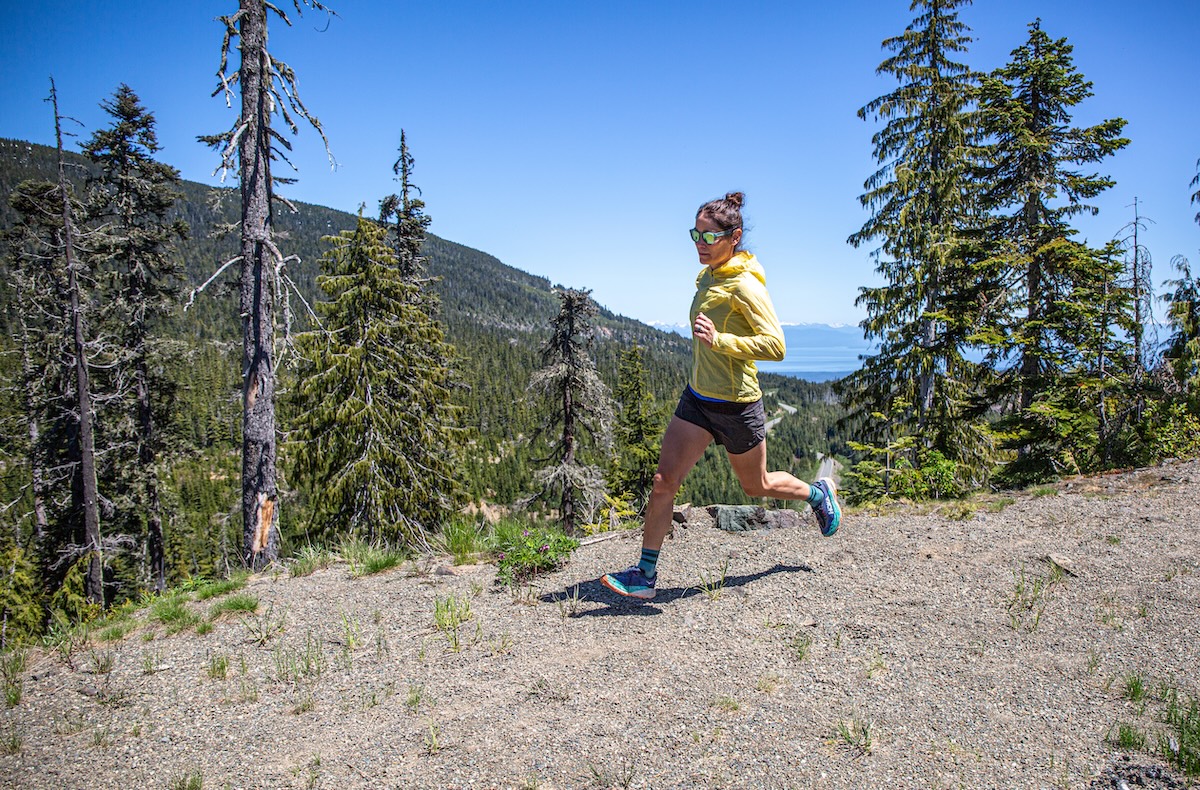
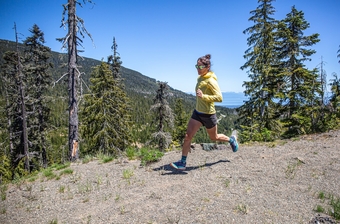
Price: $155
Weight: 1 lb. 0.4 oz. (women's)
Cushioning: Maximum
Drop: 5mm (38mm heel, 33mm forefoot)
What we like: A stable shoe with excellent long-distance comfort and aggressive, trail-ready traction.
What we don’t: Not the most breathable due to the thick upper materials.
See the Women's Hoka Speedgoat 6 See the Men's Hoka Speedgoat 6
After dozens of trail runs on a variety of terrain and conditions, I can see why the Hoka Speedgoat 6 trail running shoes are a fan favorite. In fact, I continued to wear my pair of Speedgoat shoes after I’d finished testing them, which is a pretty clear sign that I find them to be comfortable and responsive. These trail runners feel cushioned, responsive, and comfortable, and it's clear they're meant to be worn for long distances. They have more aggressive traction, stability, and a narrower fit than other shoes on the market, making them an excellent choice for technical terrain. Below, I break down my experiences with the Hoka Speedgoat 6. To see how it stacks up to the competition, check out our article on the best trail running shoes.
I was immediately impressed with the traction on the Hoka Speedgoat 6 shoes. The aggressive 5-millimeter lugs and Vibram Megagrip outsole have gripped all surfaces on my local trails, including mud, packed dirt, clay, gravel, and rocks. This is one of the Speedgoat’s more impressive features, and I've opted for these shoes instead of the Salomon S/Lab Ultra shoes (also in my current rotation) for runs with technical terrain or slick conditions. I’ve found the Speedgoat 6 shoes to be particularly adept at handling sharp corners on steep descents, and you can tell they're purpose-built for trail running on techy surfaces. I’ve also run a few road miles to reach my trailheads, and they do fine, but I wouldn’t choose them for an event or race requiring long stretches on pavement.
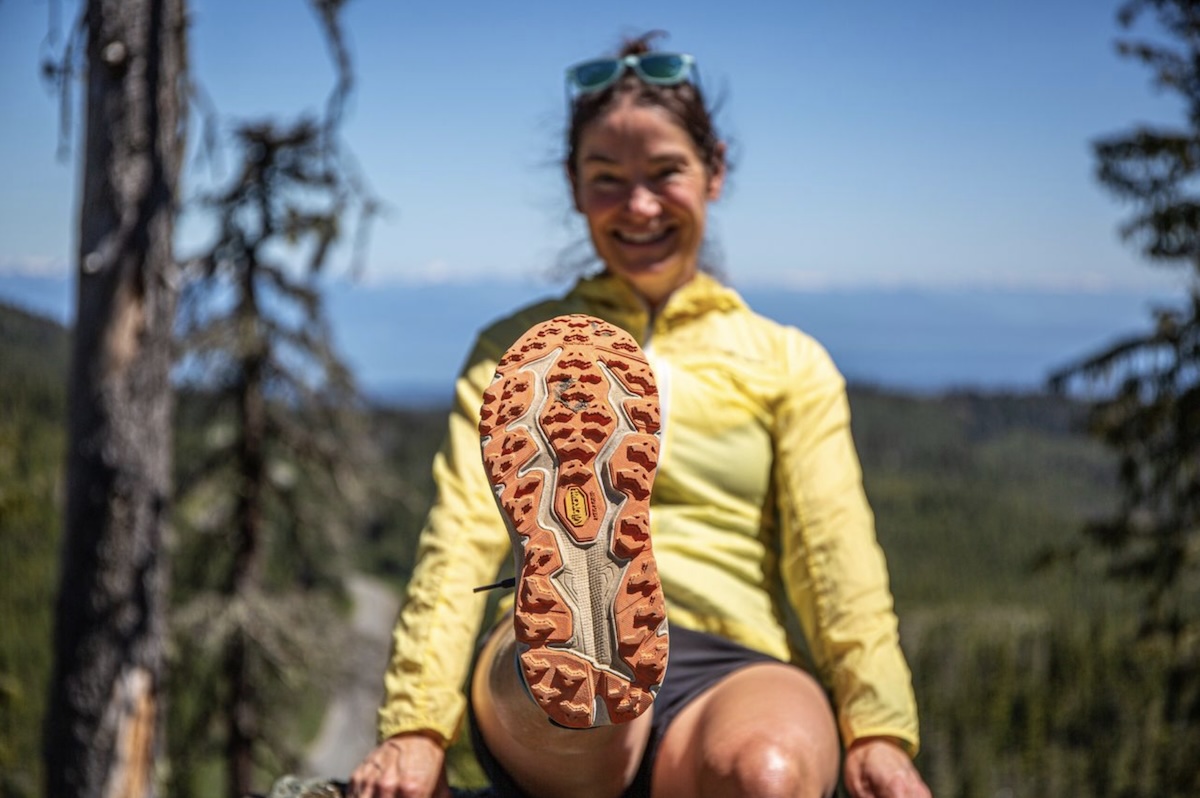
Despite their stack height, the Speedgoat 6 trail runners feel stable and controlled. I've had no issues with rolled ankles, and they perform well on technical and off-camber trails, as well as over boulder fields and loose rocks. The cushioning is firm enough that it does not fold or compress even when cornering, and they don't feel sloppy at all. After my first few test runs, I was surprised to read that they have a stack height of 38 millimeters under the heel and 33 under the forefoot. It feels like less height (this is a good thing) because I still have a solid connection to the ground, along with plenty of agility. Finally, though they are a neutral shoe, my arch feels well supported.
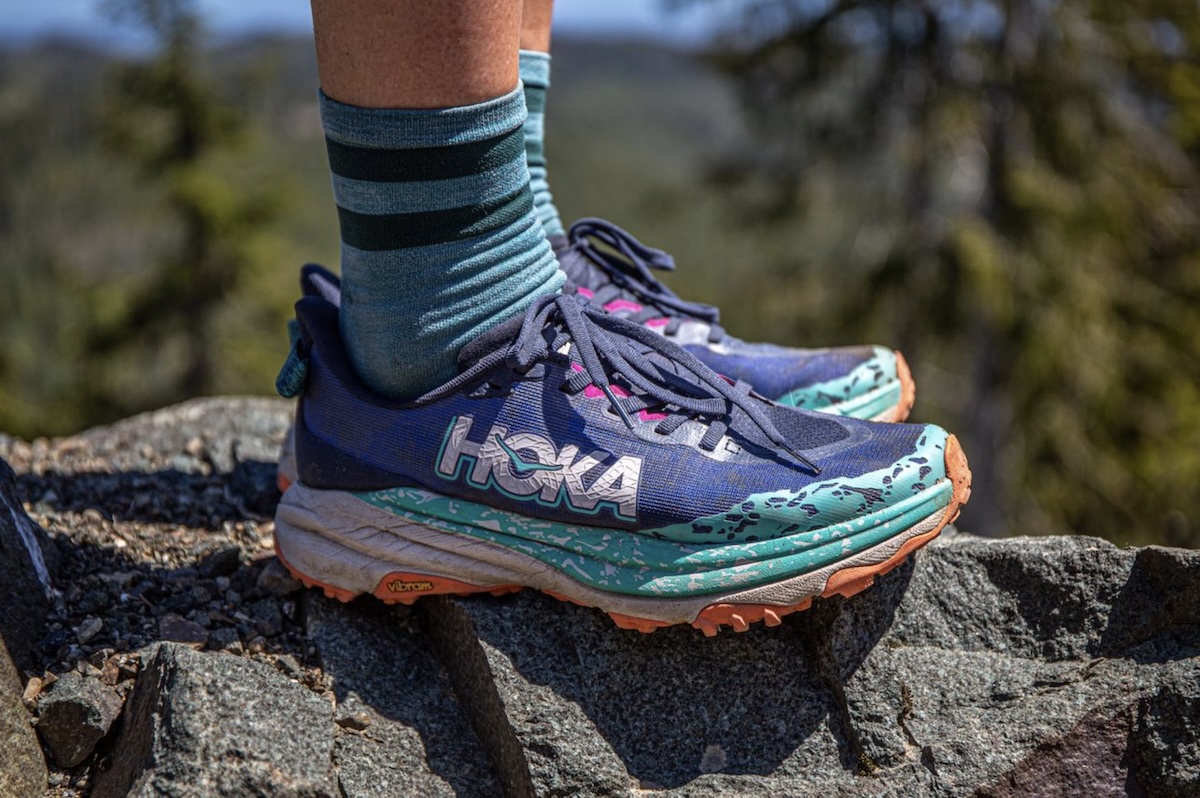
The comfort and cushion are impeccable on the Speedgoat 6 thanks to the afore-mentioned stack of 38 millimeters in the heel and 33 under the forefoot (the men's are slightly taller: 40mm heel / 35mm forefoot). It goes without saying that the maximum cushioning adds comfort and protection from the ground, and I've found a 5-millimeter drop is perfect for my trail running shoe preferences. It allows for a natural stride, but has enough drop that I don't worry about straining my Achilles when climbing. My only complaint regarding comfort is that this shoe is not particularly breathable, as the engineered woven mesh upper is quite thick.
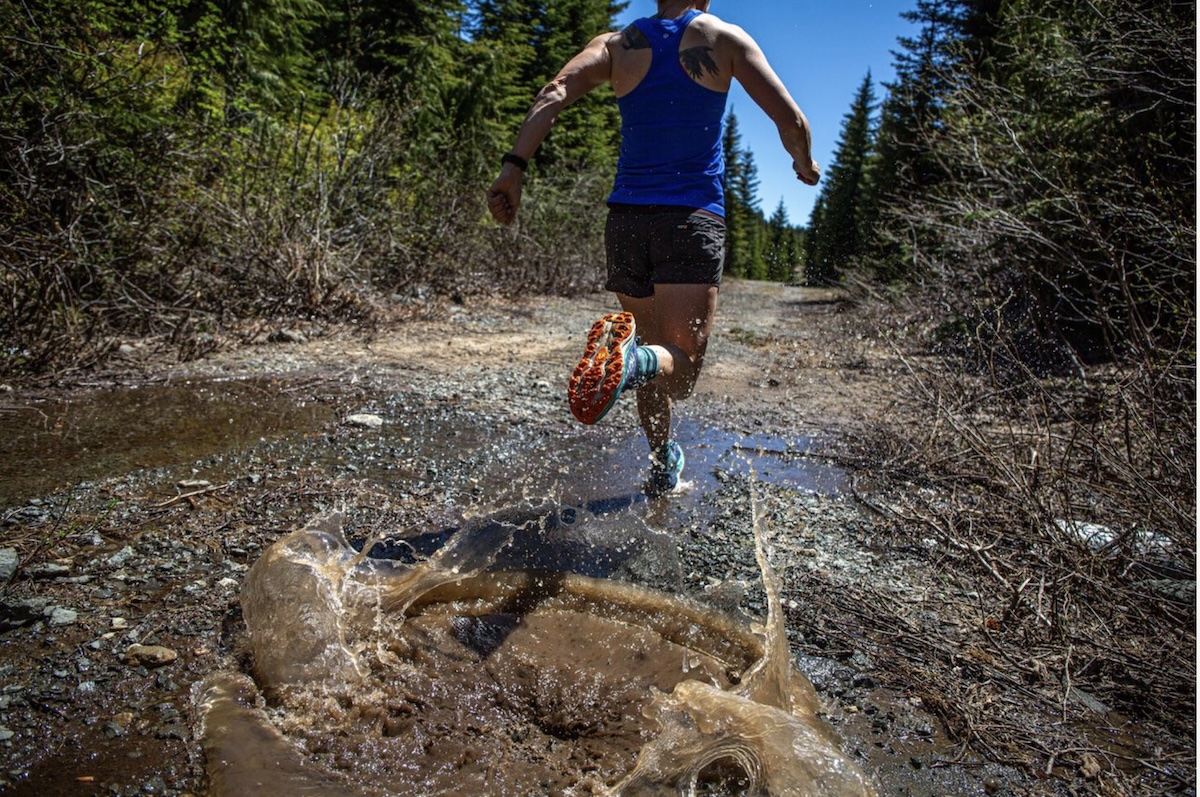
As far as responsiveness goes, the Speedgoat 6 does not seem sluggish, and I felt decent forward propulsion on most trails. I hate false-flats, but have to say I was pleased with the performance of the Speedgoat as I slogged along a 10-kilometer gently inclined rail trail during a recent outing. The locked-in fit of the Speedgoat 6 helps with their responsiveness—there is no slippage within the shoe, which helps it react to micro-movements. This is both necessary on technical trails and helps with the nimble underfoot feeling.
At 1 pound 0.4 ounces per pair, the women's Speedgoat 6 is quite light for a maximum-cushioned trail-running shoe. For comparison, our top-rated Salomon S/Lab Pulsar 4 is a unisex shoe that weighs 1 pound 1.6 ounces, and our comfortable max-cushioned Brooks Caldera weighs 1 pound 2.6 ounces for the women's version. The Speedgoat 6 feels as light and nimble as their low weight will lead you to believe, despite the thick underfoot cushion and relatively thick upper material.
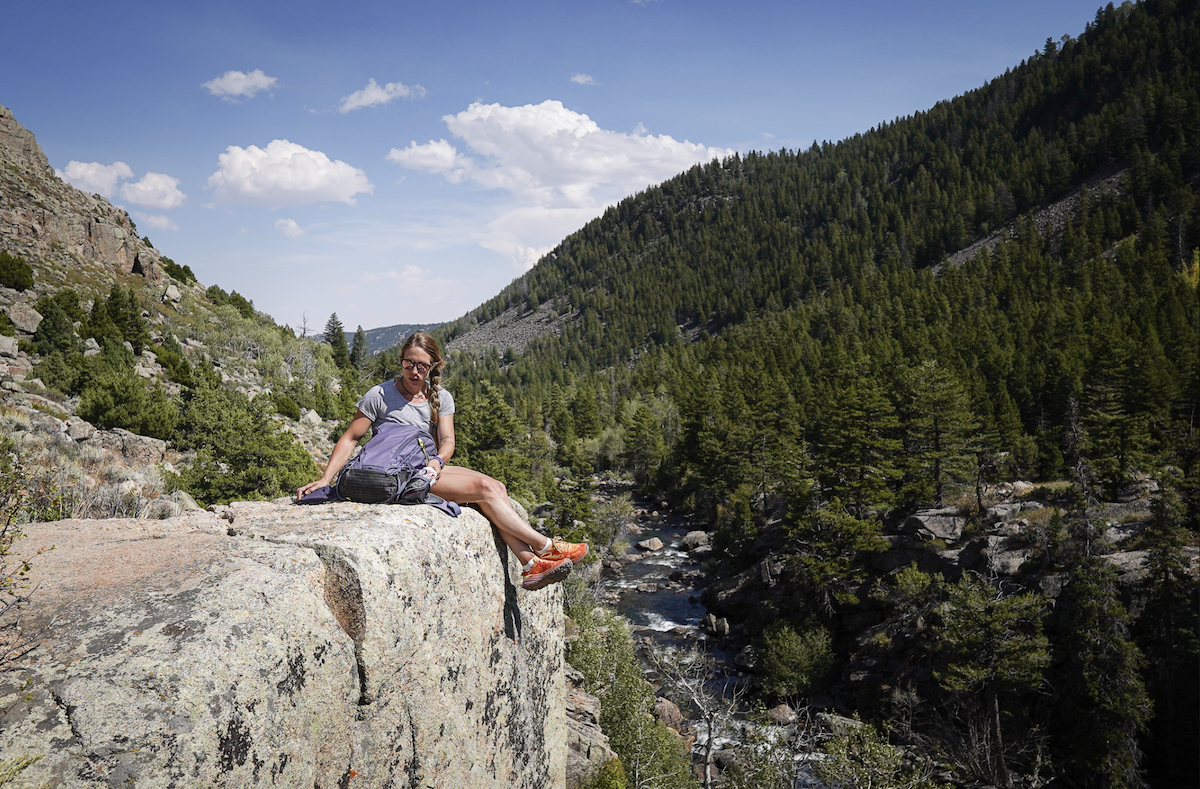
I’ve now been wearing the Speedgoat 6 consistently for a few months, and they are holding up well. The midsole/cushioning is not breaking down, the lugs are still sharp, and there are no wear lines in the mesh. By contrast, my Salomon S/Lab Ultra have had similar usage and are starting to show wear signs where the mesh creases at the toe and forefoot. The Speedgoat 6 has open areas of foam underfoot (a common design for this style) and I haven't seen any holes or abrasions despite logging plenty of trail miles.
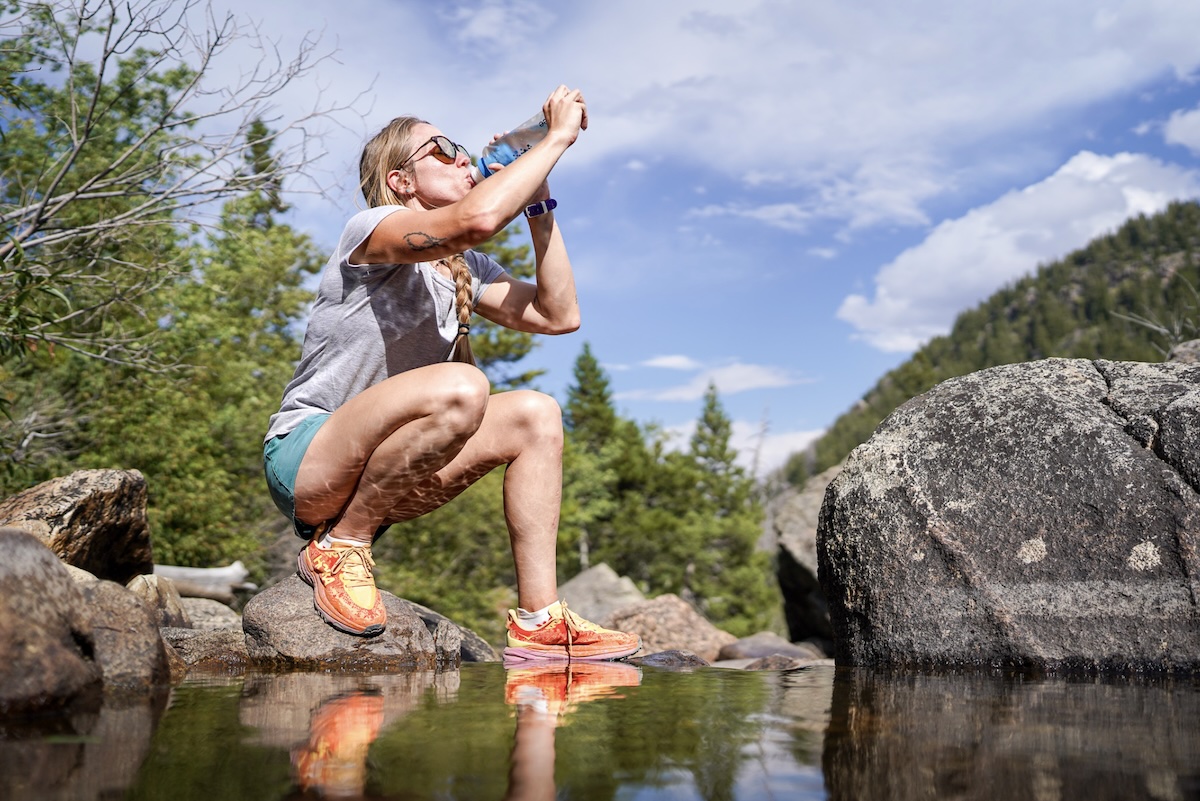
When I first wore these shoes, I found they applied pressure at the forefoot and was worried they would be too narrow. After a few miles though, the uppers have some nice stretch thanks to the mesh insert, and I haven't noticed any undue pressure or tightness. I do prefer to wear a thinner sock with the Speedgoat, but overall I'd say my women's 8.5 fits true to size. For overall fit and security, the ankle collar is quite padded, but it does help lock my heel in. My foot stays secure through the mid and forefoot too, which makes these even more of a go-to since I am not a fan of sloppy trail shoes.
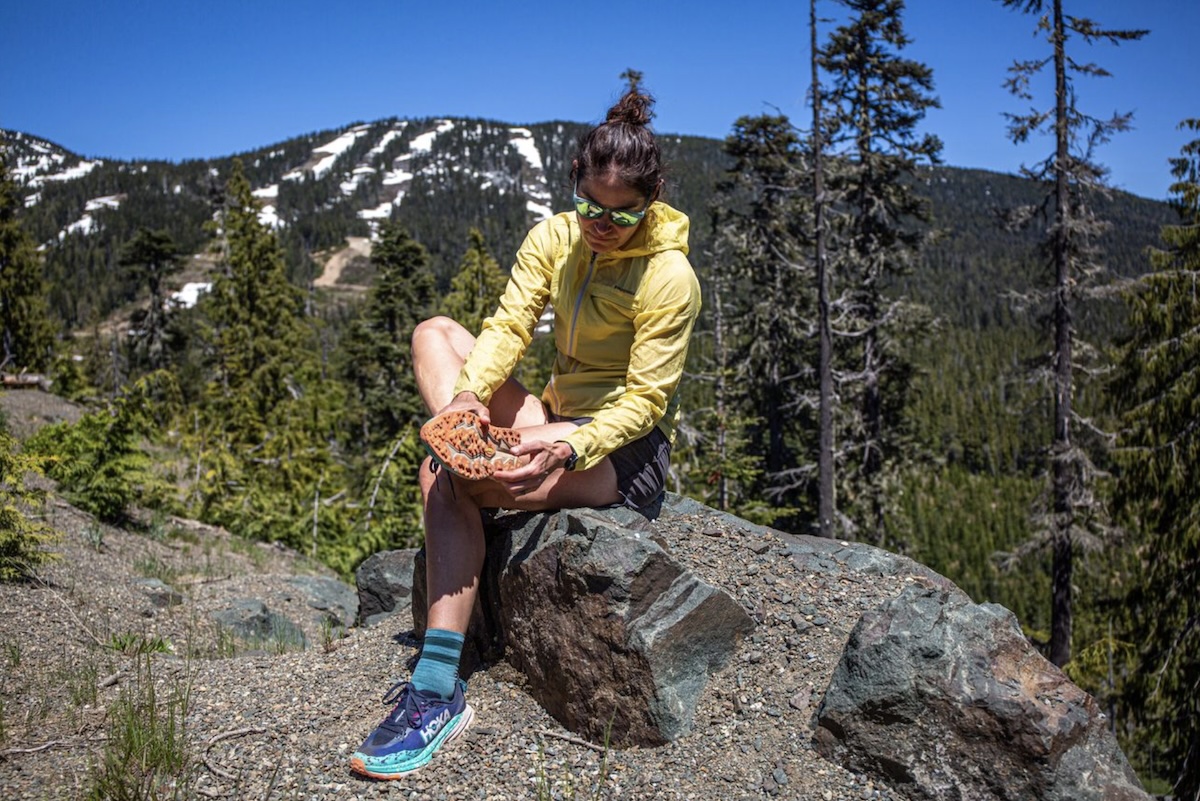
My review above covers the standard women's Hoka Speedgoat 6, but the shoe is also available in a men's model ($155, 1 lb. 3.6 oz.) and a Gore-Tex men's and women's model ($170, 1 lb. 5.2 oz. for men and 1 lb. 2 oz. for women). Hikers looking for the Speedgoat fit in a boot style can also try the Speedgoat Mid GTX, which has a tall collar similar to a built-in running gaiter. These $180 boots are heavier, coming in at 1 pound 6.8 ounces for the men's and 1 pound 3.6 ounces for the women's. Hoka also rereleased their iconic Speedgoat 2 this year in a unisex version, which we have absolutely loved and reviewed here. These cost $160 and weigh 1 pound 3.6 ounces. Finally, Hoka makes the Speedgoat in a kids' version, which has a decent size range and costs $110.
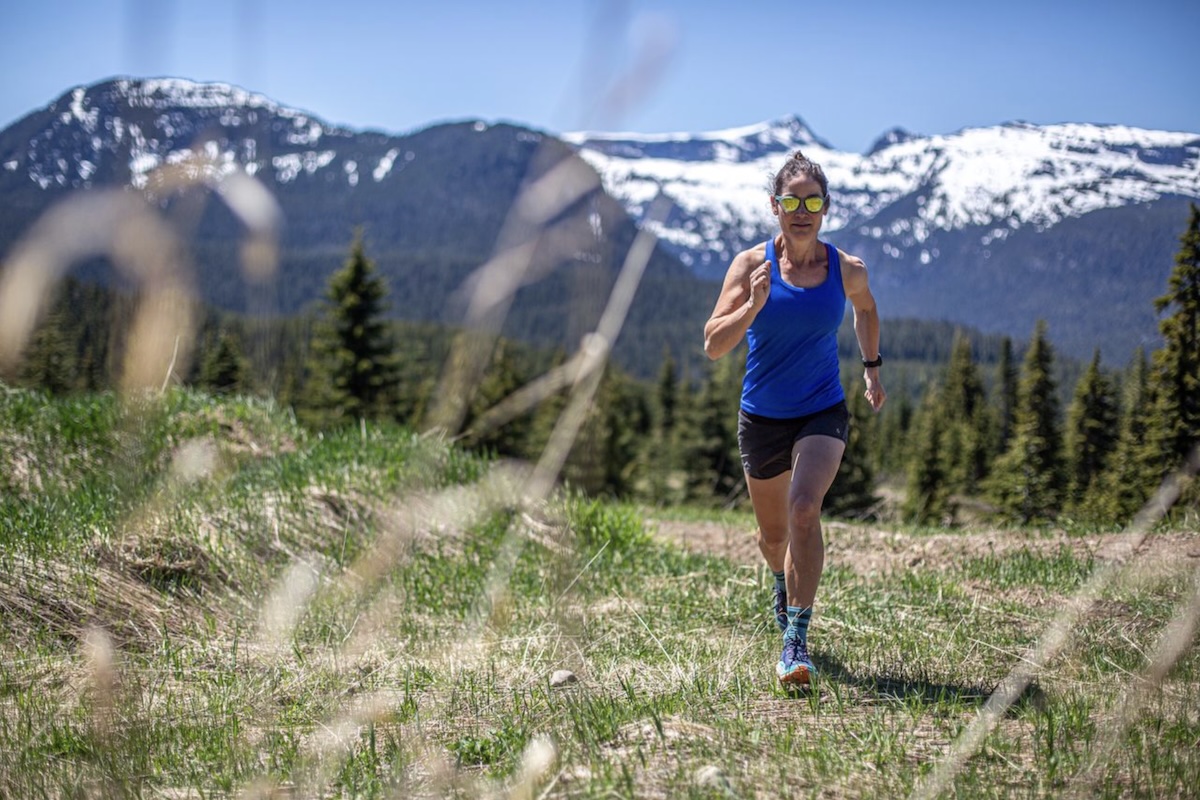
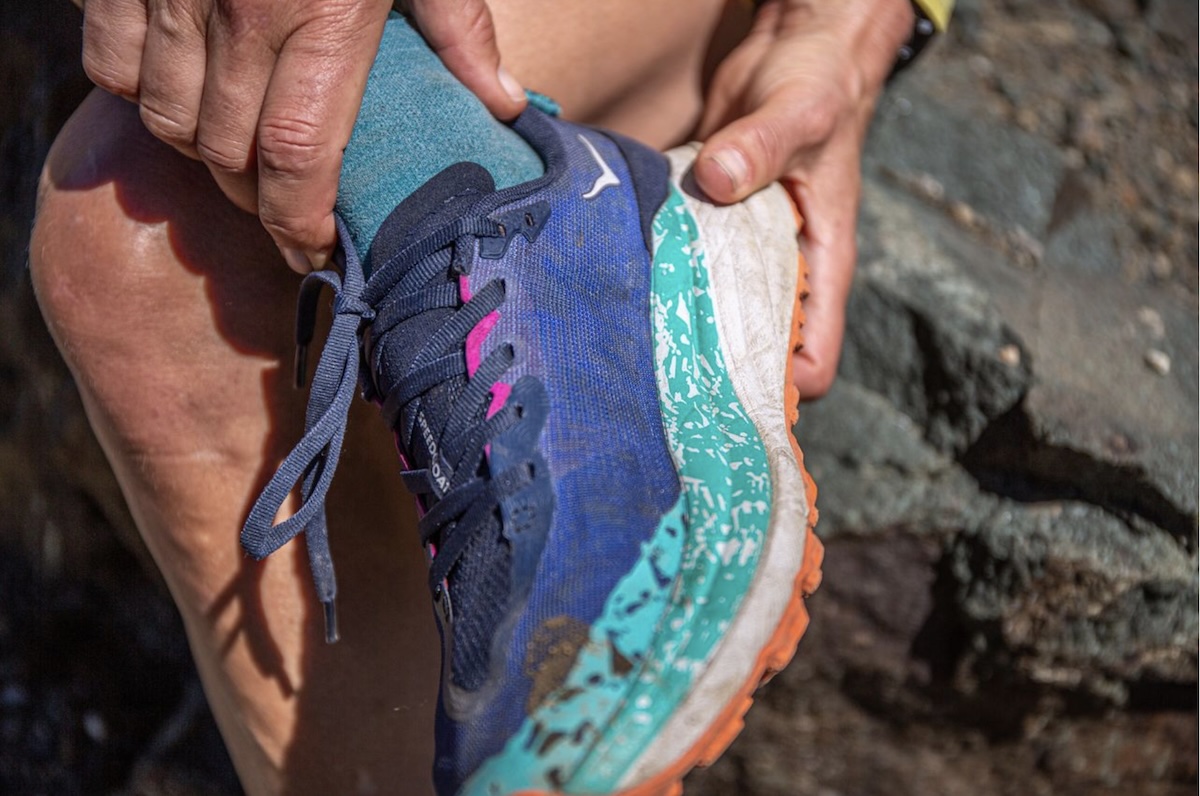
| Shoe | Price | Weight* | Stack Height | Drop | Cushion |
|---|---|---|---|---|---|
| Hoka Speedgoat 6 | $155 | 1 lb. 0.4 oz. | 38mm heel / 23mm forefoot | 5mm | Maximum |
| Hoka Speedgoat 2 | $160 | 1 lb. 3.6 oz. | 33mm heel / 28mm forefoot | 4mm | Maximum |
| Brooks Caldera 8 | $150 | 1 lb. 2.6 oz. | 38.5mm heel / 32.5mm forefoot | 6mm | Maximum |
| Saucony Xodus Ultra 4 | $170 | 1 lb. 4.2 oz. | 36mm heel / 30mm forefoot | 6mm | Maximum |
The Hoka Speedgoat 6 is the latest in the line's popular iteration, but the brand also rereleased the iconic Speedgoat 2 this year in the original fit, unisex sizing, materials, and colorways. The Speedgoat 2 has a narrower underfoot platform than the Speedgoat 6, but we've found it to have an even more technically proficient, locked-in feel than the newest version thanks to the sleeker upper and reduced stack height of 33 millimeters under the heel compared to 38 in the 6. For those missing the wildly popular feel and fit of the 2, this is a great chance to grab a pair of the rereleased shoe.
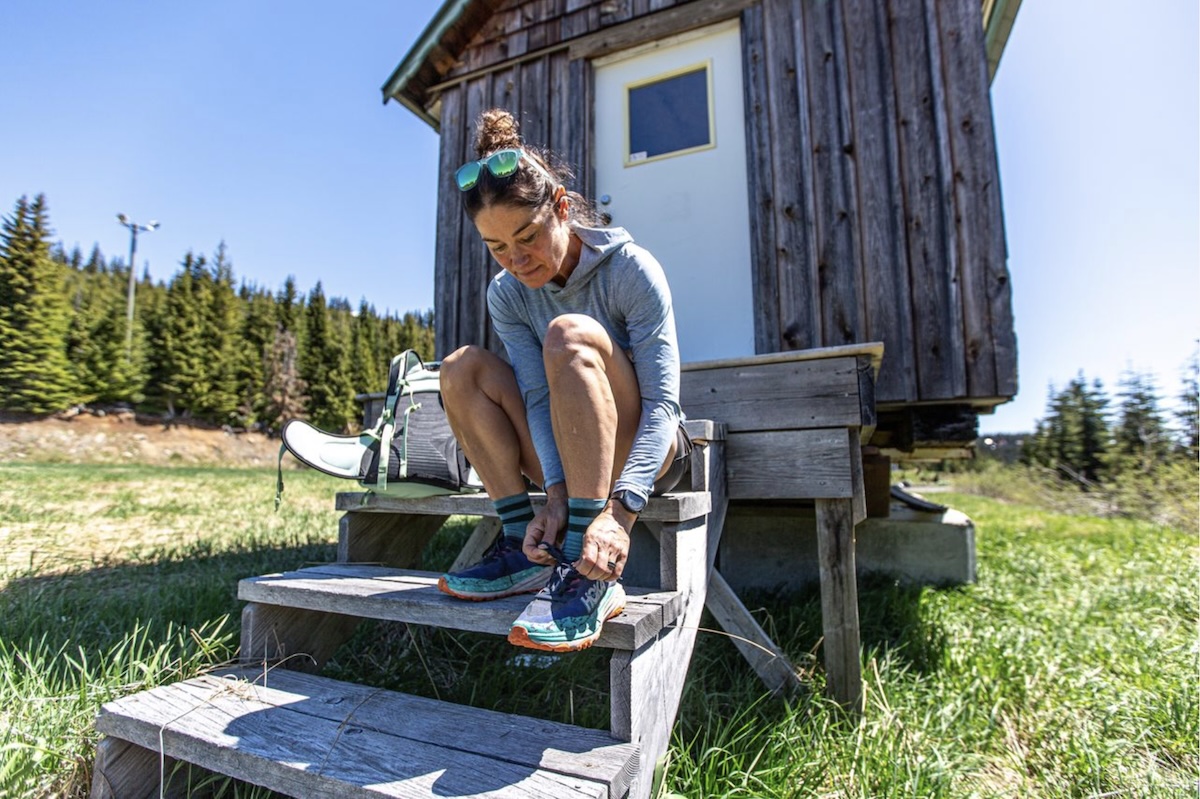
The Brooks Caldera 8 is another shoe built for comfort over long distances. With a 6-millimeter drop and a similar overall height, the Caldera 8 provides ample cushioning over miles of rocky trails with a natural stride, but the wider toe box and built-up upper means you lose the nimble feel of the Speedgoat 6. Finally, we've been loving the Saucony Xodus 4 this season. With a fully revamped Vibram outsole and a fit that toes the line between the narrower Hoka Speedgoat 6 shoes and the comfort-oriented Caldera trail runners, the Xodus is a good middle ground for long-distance comfort. You'll gain nearly four ounces per pair in the Xodus shoes though, so runners looking for a lightweight option might opt for the Speedgoat instead.
Back to the Hoka Speedgoat 6 Review See Our Trail Running Shoe Guide